The Land Of China -- Landmarks
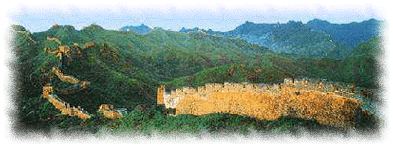
the Great Wall
The Chinese call the wall "Wan-Li Qang-Qeng", which means "10,000-Li Long Wall" (10,000 Li = about 5,000 km). The Great Wall is one of the largest building construction projects ever completed. It stretches across the mountains of northern China, winding north and northwest from Beijing. It is constructed of masonry, rocks, and packed-earth.
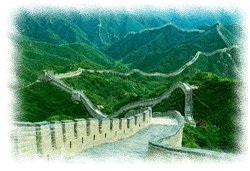
|
For over two thousand years the Great Wall separated two cultures, the nomads in the north and the agricultural way of life in the south. The nomads did not know how to cast iron and steel while the people in the south would buy livestock from the nomads. One can imagine that trade between the people of the north and the south would be mutually beneficial. In fact, however, there were constant military conflicts because trade between both sides of the wall was forbidden. A visit to the Great Wall is a review of history of over two thousand years.
Construction of the Wall began in the 7th century B.C. The then separatist ducal states in the north built walls around their territories to ward off invasions from neighbouring states. In 221 B.C.
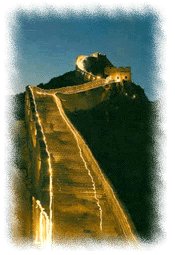
|
Construction of the Great Wall was supervised by General Meng Tian, who descended from a great line of military generals and architects. His ingenuity can be seen in the efficient (though inhumane) building policy, the consideration of topography, and the utilisation of natural barriers. However, he met with a sad end, for he was accused of treason and executed along with his brother Meng Yi. Legend has it that his soldiers, out of respect for him, loaded some earth in their uniforms to build a tomb for him, which still stands today.
Much of the original Qin dynasty Great Wall has deteriorated; however, the remains can still be seen in the form of compressed earth on the plains and loess plateaus, sand in the desert and stones in mountainous areas.
Parts of the Great Wall
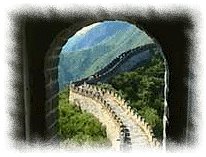
|
Badaling is the "North Pass" of Juyongguan Pass, the important strategic pass of the Great Wall. It used to be heavily guarded because it was the outpost to safeguard the capital, Beijing. In 1505, a city on the pass with two opposite gates, the "JuYong Outskirts and Key-to-North-Gate", was built. The terrain is strategically situated and access to it is difficult. The Wall at Badaling is 7.8 meters high and 5 meters wide built with rectangular stabs of stones and green bricks from the hills. Most tourists are permitted to visit only Badaling Great Wall.
JinShanLing
Jinshanling has 67 watchtowers along 11 kilometers of the Great Wall, with each watchtower serving as an example of different architecture. It is 5 to 8 meters high and 6 meters across at the base and 5 meters across at the top. The walkway along the top is paved with square bricks that provide a level surface wide enough to construct or erect batteries.
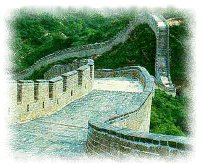
|
HuangYaGuan
Huangyuguan was first built in 557 A.D. and rebuilt with bricks during the Ming Dynasty. The whole Great Wall lies on a precipitous ridge of mountains. It has an eastern cliff that serves as a screen against invasions and a western precipice as support. It had ancient defensive structures such as fortresses, high-walls, water passes, beacon towers, and sheer precipices. Today we can also see a Museum, the Beiji Temple, and Bagua City (with the Bagua Labyrinth).
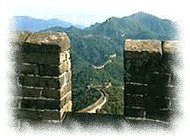
|
Shanhaiguan is north of Qinhuangdao city, where one can find the Old Dragon's Head (the only part of the Great Wall that meets the sea), the "Number One Pass Under Heaven" (the first pass of the Great Wall), Jia Shan (the first mountain the Great Wall climbs), Jiumenkou (the only part of the Great Wall in the shape of a bridge), and Meng Jiang-Nu Temple built during the Song Dynasty. Hence, Shanjaiguan Great Wall is called the "Museum of the Construction of the Great Wall."



 Chinese Culture
Chinese Culture